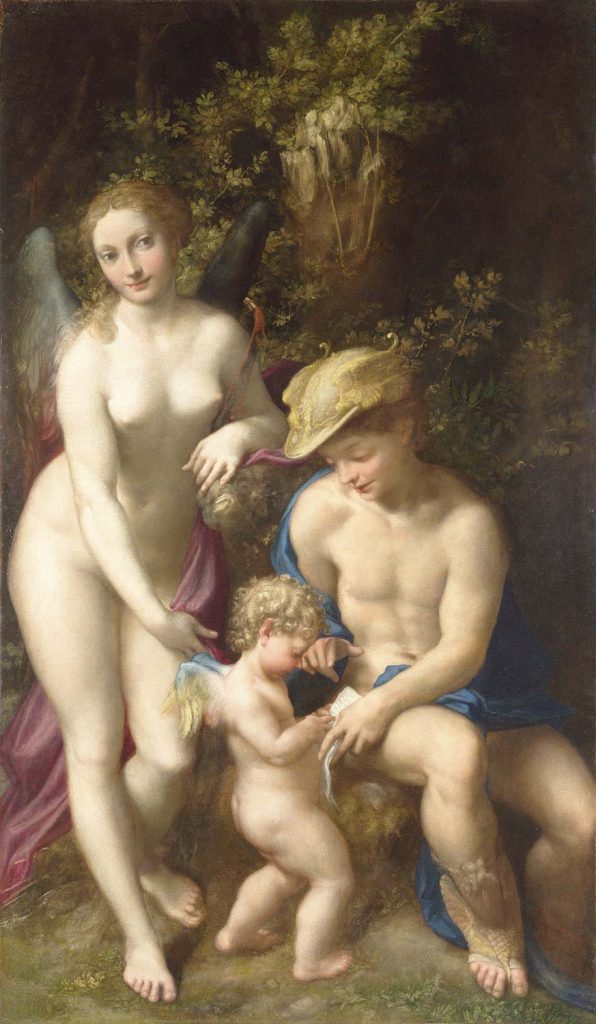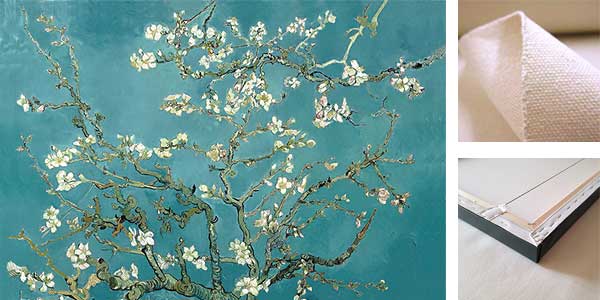
Venus with Mercury and Cupid (‘The School of Love’) by Correggio was created in 1525. The painting is in National Gallery, London. The size of the work is 155,6 x 91,4 cm and is made of oil on canvas.
About the Work
The scene takes place in a leafy glade. A young family enjoys a tender moment in the sunshine. Venus, goddess of love, holds her son Cupid’s bow as his father Mercury, god of communication and wit, teaches him to read. Mercury looks down fondly at his child but Venus, leaning on a broken tree trunk, gazes dreamily towards us and smiles. Her gaze is both alluring and elusive, not quite meeting our eye.
Unusually, Venus is shown with wings like her son. Her pose resembles the stance of Venus Pudica from classical statues, in which the goddess demurely conceals her private parts. Her weight is shifted onto one leg, accentuating the curve of her hip; her spot-lit breasts are pushed up by the sweep of her right arm that directs our attention down to Cupid.
The relationship of the figures to one another appears completely effortless and natural but is actually very sophisticated. The composition is based on a series of criss-crossing diagonals that run through the figures’ limbs and the tree trunks behind them. Venus’ and Mercury’s hands and lower legs echo each other in pose and position, and the line of their arms creates a graceful heart shape that ties the group together.
Cupid, with the wings of a little bird (the colours of which are those of the painting – blue, white and gold), stands on the central vertical axis of the composition between his parents at the foot of the tree, the splintered wood at the top of the painting recalling his golden curls. Correggio has created a wonderful rhythm of soft, sunlit skin against the darkness from which the figures emerge, the careful balance of the composition with his soft, smoky brushwork evoking a deep sense of harmony. Read more in National Gallery London
About the Artist
Antonio Allegri da Correggio (August 1489 – 5 March 1534), usually known as just Correggio was an Italian Renaissance painter who was the foremost painter of the Parma school of the High Renaissance, who was responsible for some of the most vigorous and sensuous works of the sixteenth century. In his use of dynamic composition, illusionistic perspective and dramatic foreshortening, Correggio prefigured the Baroque art of the seventeenth century and the Rococo art of the eighteenth century. He is considered a master of chiaroscuro.
Antonio Allegri was born in Correggio, a small town near Reggio Emilia. His date of birth is uncertain (around 1489). His father was a merchant. Otherwise little is known about Correggio’s early life or training. It is, however, often assumed that he had his first artistic education from his father’s brother, the painter Lorenzo Allegri. Read more in Wikipedia
Order a reproduction of this work (printed on canvas)
